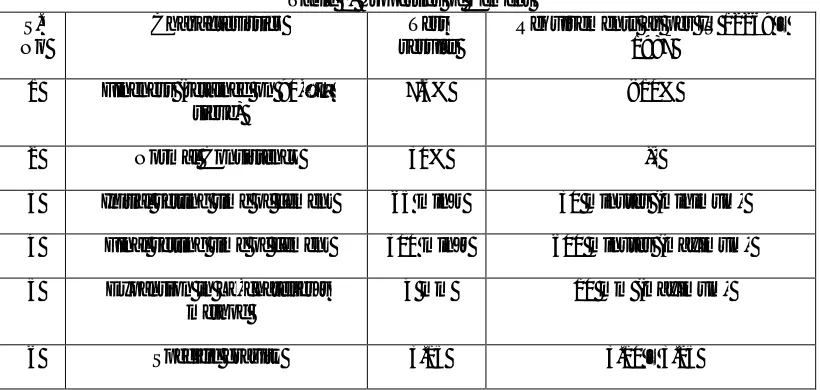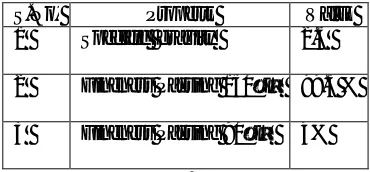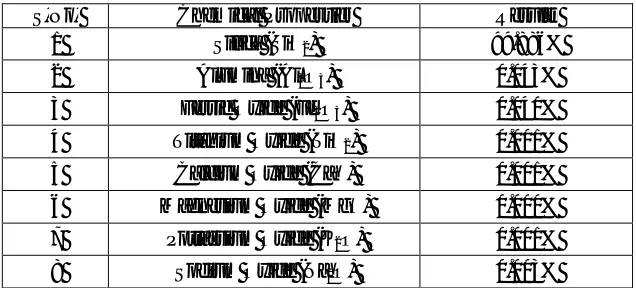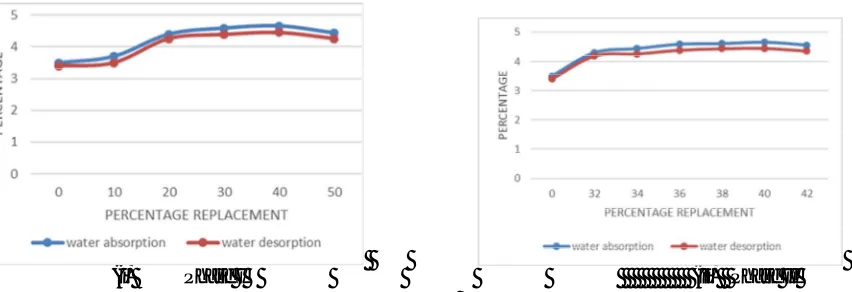ISSN(Online): 2319-8753 ISSN (Print): 2347-6710
International Journal of Innovative Research in Science,
Engineering and Technology
(A High Impact Factor, Monthly, Peer Reviewed Journal)
Visit: www.ijirset.com
Vol. 6, Issue 11, November 2017
An Experimental Investigation on the
Strength Properties of Concrete by Partial
Replacement of Cement with Glass Powder
and Silica Fume
Dr. D. V. Prasada Rao1, G.Yashvanth Sai 2
Professor, Department of Civil Engineering, Sri Venkateswara University College of Engineering, Tirupati,
Andhra Pradesh, India. 1
PG Student, Department of Civil Engineering, Sri Venkateswara University College of Engineering, Tirupati,
Andhra Pradesh, India.2
ABSTRACT: The purpose of this research is to find the suitability of Glass powder as a partial replacement of cement for new concrete with mineral admixture as silica fume. The experimental investigation is carried out in two phases in order to find the proportions. The PHASE-I consists of varying proportions of glass powder and silica fume. The PHASE-II consists of fixed proportion of glass powder with varying proportion of silica fume. In the Phase-I, M20 grade of concrete is chosen to perform the effective replacement of glass powder with cement by replacement levels of 0%, 8%, 16%, 24%, 32% and 40%, Silica fume with cement by replacement levels of 0%, 2%, 4%, 6%, 8%, 10% and the behavior of fresh and hardened properties of concrete was carried out. In Phase-II, glass powder is kept constant with cement by replacement level as 32%, Silica fume with cement by replacement levels of 0%, 2%, 4%, 6%, 8%, 10% and the behavior of fresh and hardened properties of concrete was carried out. The compressive strength shows an average of 30% more strength than the conventional concrete for an optimal percentage of 40% which consist of 32% of glass powder and 8 % of silica fume.The flexural strength has an increase of 100% when compared to conventional concrete for 28 days and 27% more for 56 days. The split tensile strength has an increase of 35% when compared to conventional concrete for 56 days.
KEYWORDS: Micro-Silica, Glass powder, Partial Replacement, Particle Packing and Strength of Concrete, Combination and Strength of Concrete.
I. INTRODUCTION
ISSN(Online): 2319-8753 ISSN (Print): 2347-6710
International Journal of Innovative Research in Science,
Engineering and Technology
(A High Impact Factor, Monthly, Peer Reviewed Journal)
Visit: www.ijirset.com
Vol. 6, Issue 11, November 2017
II. OBJECTIVE
The main objective of the present experimental investigation is to obtain the influence of the combined application of Silica Fume and Glass Powder on various strength properties of M20 grades of concrete. 10%, 20%,30%, 40% & 50% of glass powder and 2%, 4%, 6%, 8% and 10% of silica fume. Compressive strength, split tensile strength, Flexural strength, Modulus of Elasticity & water absorption tests of the concrete prepared using different proportions of silica fume from 0 to 10 % at 2 % variation and keeping glass powder as 32 % are to be obtained and the results are to be compared with that of controlled concrete.
III. EXPERIMENTAL INVESTIGATION
3.10 PROPERTIES OF MATERIALS
3.11 CEMENT
In the present investigation Ordinary Portland Cement (OPC) of 53 Grade confirming to IS specifications was used. The properties of cement are shown in Table.1.
Table 1. Properties of Cement
S. No
Characteristics Test
results
Requirements as per IS 12269 – 1987
1 Fineness (retained on 90-µm sieve)
7.6% <10%
2 Normal Consistency 30% --
3 Initial setting time of cement 65 min’s 30 minutes (minimum)
4 Final setting time of cement 300 min’s 600 minutes (maximum)
5 Expansion in Le-chatelier’s method
4 mm 10 mm (maximum)
6 Specific gravity 3.15 3.10 – 3.25
3.12 FINE AGGREGATE
ISSN(Online): 2319-8753 ISSN (Print): 2347-6710
International Journal of Innovative Research in Science,
Engineering and Technology
(A High Impact Factor, Monthly, Peer Reviewed Journal)
Visit: www.ijirset.com
Vol. 6, Issue 11, November 2017
Table 2. Properties of Fine Aggregate
S.No Property Value
1 Specific Gravity 2.76
2 Fineness Modulus 2.77
3 Bulk Density (Loose) 14.50 kN/m3
4 Grading of Sand Zone – II
3.13 COARSE AGGREGATE
Crushed granite metal of nominal size 20 mm and 10 mm obtained from the local quarry and confirming to IS specifications were used. The properties of coarse aggregate are shown in Table.3. The coarse aggregate used for the preparation of concrete is a combination of 20 mm and 10 mm size aggregates in ratio 1.5: 1.0.
Table3. Properties of Coarse Aggregate
S.No Property Result
1 Specific Gravity 2.83
2 Bulk Density (Loose ) 14.80 kN/m3
3 Water Absorption 1.2 %
4 Fineness Modulus 7.1
3.14 GLASS POWDER
Waste glass powder which is produced form the glass manufacturing industry is been collected and made into glass powder. The physical and chemical properties are presented in the table. The properties of glass powder are shown in Table 4 & Table 5.
Table 4. Physical Properties of Glass Powder
S.No. Property Value 1 Specific gravity 2.6
2 Fineness Passing 150µm 99.5 %
3 Fineness Passing 90µm 4%
Table 5. Chemical Properties of Glass Powder
ISSN(Online): 2319-8753 ISSN (Print): 2347-6710
International Journal of Innovative Research in Science,
Engineering and Technology
(A High Impact Factor, Monthly, Peer Reviewed Journal)
Visit: www.ijirset.com
Vol. 6, Issue 11, November 2017
3.15 SILICA FUME:
Silica Fume is highly pozzolanic mineral admixture, which is mainly utilized to improve concrete strength and durability of concrete. Silica Fume reacts with calcium hydroxide formed during hydration of cement results in the increase in strength and also the Silica Fume fills the voids between cement particles leads to increase in the durability. Silica Fume is procured from ASTRRA CHEMICALS, Thousand Lights and Chennai. The properties of Silica Fume are shown in Table 6 and Table 7.
Table 6. Physical Properties of Silica Fume
S.No. Physical Properties Results
1 Physical State Micronised Powder
2 Odour Odourless
3 Appearance White Colour Powder
4 Colour White
5 Pack Density 0.76 gm/cc
6 PH of 5% SOLUTION 6.90
7 Specific Gravity 2.63
8 Moisture .058%
9 Oil Absorption 55 ml / 100 gms
Table 7. Chemical Properties of Silica Fume
S.No. Chemical Properties Results
1 Silica (SiO2) 99.886%
2 Alumina (Al2O3) 0.043%
3 Ferric Oxide (Fe2O3) 0.040%
4 Titanium Oxide (TiO2) 0.001%
5 Calcium Oxide (CaO) 0.001%
6 Magnesium Oxide (MgO) 0.000%
7 Pottassium Oxide (K2O) 0.001%
ISSN(Online): 2319-8753 ISSN (Print): 2347-6710
International Journal of Innovative Research in Science,
Engineering and Technology
(A High Impact Factor, Monthly, Peer Reviewed Journal)
Visit: www.ijirset.com
Vol. 6, Issue 11, November 2017
3.16 WATER
Water used for casting and curing of concrete test specimens is free from impurities which when present can adversely influence the various properties of concrete.
3.17 CONCRETE MIX PROPORTION
The concrete mix design was proposed by using Indian Standard for control concrete. The grade was M20. The mixture will be prepared with the cement content of 310 kg/m3 and water to cement ratio of 0.5. The mix proportion of materials is 1:2.36:4.02 as per IS 10262-2009.
3.20 TEST SPECIMENS
Concrete test specimens consist of 150 mm × 150 mm × 150 mm cubes, cylinders of 150 mm diameter and 300 mm height and 100 mm × 100 mm × 500 mm prisms. Concrete cube specimens were tested at 3, 7, 28, 56 & 90 days of curing to obtain the compressive strength of concrete. Cylindrical specimens were tested at the age of 28 days to obtain the compressive strength, split tensile strength and Modulus of Elasticity of concrete. The prisms were tested at the age of 28 days to obtain the flexural strength of concrete. The rate of loading is as per the Indian Standard specifications. Water absorption test is also performed for durability.
IV. RESULTS AND DISCUSSIONS
4.10 COMPRESSIVE STRENGTH
The variation of the cube compressive strength with the age of M20 grade concrete prepared using the various proportions of Silica Fume & Glass Powder is shown in Fig.1. Each value of the cube compressive strength indicates the average of three test results. It can be observed that the compressive strength of 8% Silica Fume and 32% Glass Powder concrete exhibits more than the control concrete in Phase I & Phase II and with further increase in Silica Fume the strength decreases for the given Glass Powder content.
(i) Phase I (ii) Phase II
ISSN(Online): 2319-8753 ISSN (Print): 2347-6710
International Journal of Innovative Research in Science,
Engineering and Technology
(A High Impact Factor, Monthly, Peer Reviewed Journal)
Visit: www.ijirset.com
Vol. 6, Issue 11, November 2017
Fume and 32% Glass Powder concrete exhibits more than the control concrete in Phase I & Phase II and with further increase in Silica Fume the strength decreases for the given Glass Powder content.
(i) Phase I (ii) Phase II
Fig. 2. Variation of Split Tensile Strength of M20 Grade Concrete with age for different percentages of Glass Powder & Silica Fume.
4.30 FLEXURAL STRENGTH
The variation of the Flexural strength with the age of both 28 Days and 56 Days of M20 grade concrete prepared using the various proportions of Silica Fume & Glass Powder is shown in Fig.3. It can be observed that the Flexural strength of 8% Silica Fume and 32% Glass Powder concrete exhibits more than the control concrete in Phase I & Phase II and with further increase in Silica Fume the strength decreases for the given Glass Powder content.
(i) Phase I (ii) Phase II
Fig. 3. Variation of Flexural Strength of M20 Grade Concrete with age for different percentages of Glass Powder & Silica Fume.
4.40 MODULUS OF ELASTICITY
ISSN(Online): 2319-8753 ISSN (Print): 2347-6710
International Journal of Innovative Research in Science,
Engineering and Technology
(A High Impact Factor, Monthly, Peer Reviewed Journal)
Visit: www.ijirset.com
Vol. 6, Issue 11, November 2017
(i) Phase I (ii) Phase II
Fig. 4. Variation of Modulus of Elasticity of M20 Grade Concrete with age for different percentages of Glass Powder & Silica Fume.
4.50 WATER ABSORPTION AND DESORPTION
The variation of the Water Absorption & Desorption of M20 grade concrete prepared using the various proportions of Silica Fume & Glass Powder is shown in Fig.5. It can be observed that the Water Absorption & Desorption of 8% Silica Fume and 32% Glass Powder concrete is higher in Phase I & Phase II.
(i) Phase I (ii) Phase II
Fig. 5. Variation of Water Absorption & Desorption of M20 Grade Concrete with age for different percentages of Glass Powder & Silica Fume.
V. CONCLUSIONS
ISSN(Online): 2319-8753 ISSN (Print): 2347-6710
International Journal of Innovative Research in Science,
Engineering and Technology
(A High Impact Factor, Monthly, Peer Reviewed Journal)
Visit: www.ijirset.com
Vol. 6, Issue 11, November 2017
compared to conventional concrete. Hence glass powder can be used as partial replacement of cement, with satisfactory results.
REFERENCES
1. Aimin Xu and Ahmad shayam, “Value – added utilization of waste glass in concrete”, Cement and concrete research, vol.34,81- 89,2004.
2. Carpenter,A.J. and Cramer,C.M, “ Mitigation of ASR in pavement patch concrete that incorporates highly reactive fine aggregate”,
Transportation Research Record 1668, Paper No. 99-1087,pp.60- 67,1999.
3. Chi sing lam, chi sun poon and Dixon chan, “Enhancing the performance of pre – cast concrete blocks by incorporating waste glass – ASR consideration”, Cement and concrete composites, vol: 29pp, 616-625,2007.
4. Christopher cheeseman, “Production of sintered light weight aggregate using waste ash and other industrial residues”, Belgium, 2011.
5. Federio.L.M and Chidiac S.E, “Waste glass as a supplementary cementitious material in concrete – Critical review of treatment methods”, Cement and Concrtet Composites, vol,31,606-610,2001.
6. Idir.R,Cyr.M and Tagnit – Hamou.A, “ Use of waste glass as powder and aggregate in cement based materials”, SBEIDCO – 1st international
Conference on Sustainable Built Environment Infrastructures in Developing Countries ENSET Oran (Algeria) – October 12-14, 2009.
7. IIker bekir topcu and mehmet canbaz, “Properties of concrete with glass “, Cement and Concrete Research, vol : 34,267-274,2004.
8. Jin.W, Meyer.C, and Baxter.S, “Glasscrete – Concrete with glass aggregates”, ACI Materials Journal, vol. 97.pp. 208-213, 2000.
9. Mageswari.L.M and B.Vidivelli, “ The use of Sheet Glass Powder as Fine Aggregate Replacement in Concrete”, the open Civil Engineering
Journal, vol:4,65-71, 2010.
10. Malek Batayneh, Iqbal Marie, Ibrahim Asi, “Use of Selected waste Materials in Concrete Mixes”, Waste Management, vol. 27, 2007.
11. C.Meyer, S.Baxter and W.Jin, “ alkali – Aggregate Reaction in Concrete with waste Glass as Aggregate”, Proceedings of the 4th Materials Engineering Conference : Materials for the new millennium, ASCE, Reston, V.A,pp.1388-1397, 1996.
12. Narayanan Neithalath, “An overview of the benefits of using glass powder as a partial cement replacement material in concrete”, The Indian





